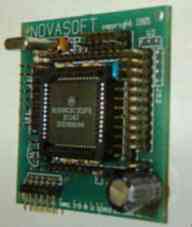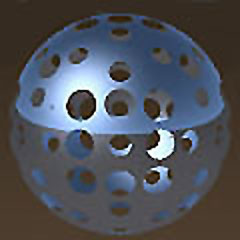
This is an explanation of Neuratech's nanotechnology-based motor control system. Essentially, three ingredients are required for complete motor control. The first is neural control. Let's say a person wants to move his left pinky. When this happens, the brain creates an electrical current in certain neurons, so that those neurons are "activated." On the neural level, this is called an action potential. This action potential travels from neuron to neuron, until it reaches the the proper nerve connected to the pinky, which in turn contracts certain muscles and inhibits others in order to actually move the pinky. By controlling those neurons in the brain that send out the order in the first place, we can therefore control the pinky, and in fact, all the muscles in the body. This is accomplished by injecting millions of microscopic nanodevices in to the skull, which embed themselves in the millions of neurons on the surface of the brain, and sometimes even further into the brain. Each nanodevice has complete control of the neuron it is connected to. The only problem is - how do you coordinate millions of nanodevices to get full control over movement?
That requires the second ingredient: central processing. The nanodevices each report to a central computer, also embedded in subject's body. The exact nature of reporting will be discussed below. The central processor coordinates the different devices, telling one group of devices to inhibit its neurons, and another to activate.
Finally, we need knowledge of specific brain functions, that is which neurons exactly to control and when. Years of research here at Neuratech have given us unprecedented knowledge about the brain. But we still have a long way to go. Nanotechnology gives us the ability to monitor neural activity as well as control it. Each nanodevice has a probe to detect and report back neural activity.
Nanodevices are actually small radio transmitters that have two functions: They can either detect or trigger action potentials in neurons, using the probes on the bottom of the devices. The devices communicate with the central nanoprocessor using high frequency RF signals. The communication messages are extremely simple. When the device detects an action potential, it sends a one bit message to the nanoprocessor indicating this. When the nanoprocessor wants to control a certain neuron, it sends either an activate command or an inhibit command, with each command only two bits long. Therefore, each individual nanodevice only requires an extremely small bandwidth, so that millions of devices can operate without interfering with each other. Typically, the signals are sent from 125Mhz to 175Mhz, with 2Hz wide signals, which allows up to 25 million different devices. Nevertheless, it is important to make sure the laboratory is free of any electronic noise, so that no outside interference ruins the link between the nanodevice and nanoprocessor. Here is a picture of a nanodevice:
Here is the central processor:
The processor is placed in a spherical plastic encasement, which is placed in a cavity in the monkey's body. The sphere measures one and a half inches in diameter, and is not felt by the animal. The encasement has an array of antennae to receive and sent signals. Below is a picture of this encasement: 
Now let's see the procedure in action. Below is a picture of a normal rhesus monkey's brain.
When nanodevices are injected into the monkey's skull, millions of these devices replicate and attach themselves to the surface of the brain, implanting themselves in individual neurons. Here is a nanodevice connected to a neuron (both are dyed green for visibility):
Here is a picture of the brain several minutes after the injection, after several tens of thousands of devices have "landed":
Finally, after complete coverage of the brain is acheived: